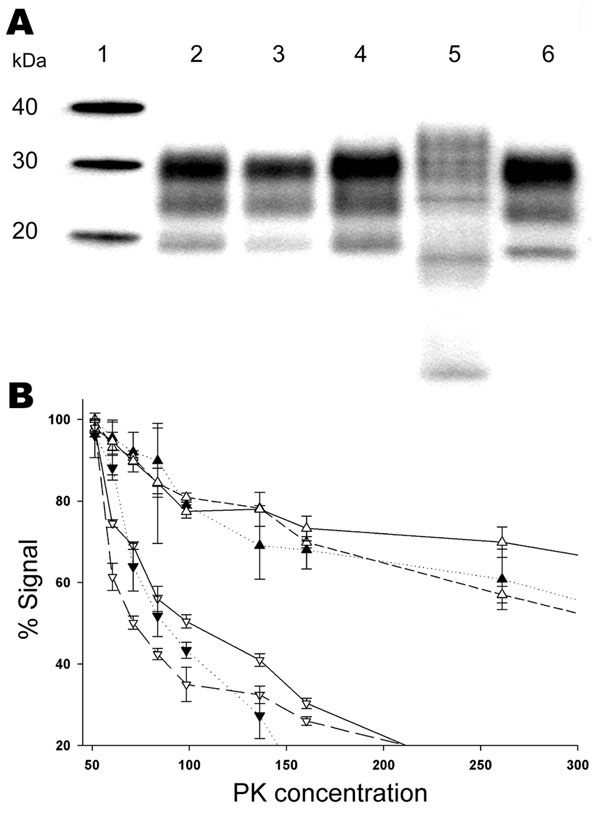Volume 13, Number 8—August 2007
Research
Classic Scrapie in Sheep with the ARR/ARR Prion Genotype in Germany and France
Figure 4

Figure 4. Biochemical properties of prion protein (PrPSc) associated with the ARR/ARR scrapie case S83 from France after passage in Tg 338 VRQ mice. A) Western blot mobility of the original S83 ARR/ARR case (lane 3) and S83 passaged in Tg338 (lane 4) were similar and comparable to a classic scrapie isolate (Langlade, lane 2). PrPSc WB profile of ARR/ARR bovine spongiform encephalopathy (BSE) in sheep (lane 6) and profiles of atypical scrapie case isolates (lane 5) passaged into Tg338 mice were readily distinguishable by their banding pattern or electromobility. B) PrPsc protein kinase (PK) sensitivity of the original S83 isolate (▼) and a classic scrapie isolate (Langlade) (△) compared with S83 (▽) and Langlade (▲) that had been passaged in Tg338 (2 different mice for each isolate). Triplicate ELISA measurements were performed by using the TeSeE Sheep/Goat rapid test (Bio-Rad), after brain homogenate digestion with PK concentration ranging from 50 µg/mL to 500 µg/mL.